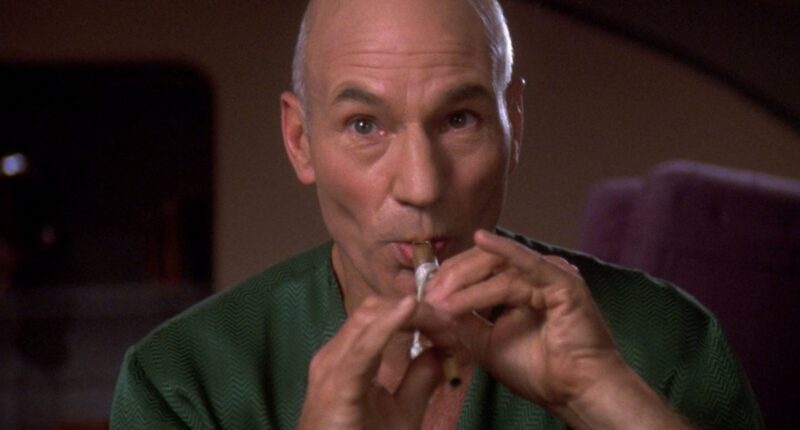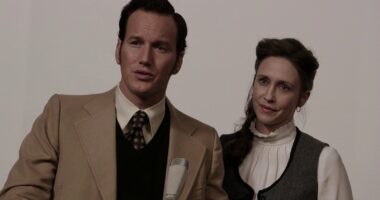Share this @internewscast.com
Launched in 1966, “Star Trek” has since blossomed into a vast franchise that includes numerous television series, 14 feature films, video games, novels, and comic books. The original episodes of “Star Trek” frequently tackled poignant and serious themes, reflecting the societal issues of the time. Through allegory, the series explored complex topics such as gender, sexuality, race relations, politics, and war. While these subjects may not be considered “feel-good,” the original series wasn’t solely somber in tone.
Across the “Star Trek” universe, many episodes break away from the franchise’s typical intensity, offering viewers a lighthearted respite. These episodes steer clear of dire space crises or seemingly insurmountable challenges, focusing instead on the series’ rich lore and introspective narratives. When executed well, these feel-good episodes often become fan favorites, standing out as some of the best in the series. Fortunately, there are plenty of such episodes for fans to enjoy.
Some episodes take a nostalgic look at Starfleet’s early days, while others delve into the personal lives of beloved characters. Regardless of the theme, these uplifting episodes are perfect for relaxing and are especially effective at attracting new viewers with their engaging and entertaining stories. Here are five top feel-good “Star Trek” episodes, listed in chronological order as they aired.
Among the original series’ offerings, “The Trouble with Tribbles” from Season 2, Episode 15, is arguably the most iconic. This reputation is partly due to its comedic highlight, one of the funniest scenes in “Star Trek” history. The episode finds the USS Enterprise crew and a Klingon crew on shore leave at Deep Space Station K7, leading to a series of humorous problems largely caused by the Tribbles.
The adorable, fluffy creatures reproduce rapidly, fueled by the Quadrotriticale grain the Enterprise crew is tasked with protecting. Although the situation spirals into chaos with a growing pile of Tribbles, their charm is undeniable. The episode concludes with Ensign Montgomery “Scotty” Scott (played by James Doohan) beaming all the Tribbles aboard the Enterprise to the Klingon ship’s engineering room, quipping, “They’ll be no Tribble at all.”
The Trouble with Tribbles
“The Trouble with Tribbles” remains a beloved episode, a testament evident in the “Star Trek: Deep Space Nine” episode “Trials and Tribble-ations.” This episode sees the DS9 team travel back in time to the events of the original series, interacting with its characters and addressing intriguing questions, such as the changing appearance of Klingons over time. While this homage is delightful, the original Tribble episode remains unmatched in its charm.
The cute, furry creatures reproduce at exponential rates, thanks to the presence of Quadrotriticale grain that the Enterprise crew is meant to guard. While the situation becomes dire, thanks to an ever-growing mountain of cooing fluff, it’s impossible not to love the little menaces. The episode ends with Ensign Montgomery “Scotty” Scott (James Doohan) transporting all of the Tribbles onboard the Enterprise to the Klingon ship’s engineering room, saying “They’ll be no Tribble at all.”
There’s a lot of love for “The Trouble with Tribbles,” and this was clear in the “Star Trek: Deep Space Nine” episode, “Trials and Tribble-ations.” It sees the command team of DS9 transported back in time to the events of the earlier series’ episode. They interact with the characters and cover several interesting topics, including why Klingons looked different in the 23rd century. It’s a fun, lighthearted episode, but you can’t beat the OG tribble story at its own game.
The Inner Light
“Star Trek: The Next Generation” had many feel-good episodes, including “Captain’s Holiday,” where Captain Picard (Patrick Stewart) has an adventure on Risa. While that episode is a fan-favorite, most would agree that Season 5, Episode 25’s “The Inner Light” is one of the series’ best. In fact, it’s Stewart’s favorite episode from the entire show, which isn’t surprising given the story. After the USS Enterprise-D discovers a probe in space, it scans Picard and transports him to the planet Kataan.
Picard awakens from a fever with his wife beside him, as he’s not himself; he’s a native named Kamin. Initially, Picard insists he’s not Kamin but is, instead, Jean-luc Picard; but after some time, he settles into his new life. Years pass, and Kamin has built his family as they endure sad times and enjoy happy times. Meanwhile, minutes pass onboard the Enterprise — but for Picard, he lives an entire lifetime.
It’s during this event that Picard learns to play the Ressikan flute, which he enjoys. Forty years pass, and Kamin discovers that the planet’s star is on the verge of going nova. As the civilization launches a rocket into space, Kamin realizes that it’s the probe that transported him there 40 years earlier. The people around him explain that its purpose was to keep their civilization alive, and after 25 minutes pass on the Enterprise, Picard awakens. He finds a flute inside the probe and continues to play it throughout his life.
Little Green Men
If there’s one thing “Star Trek” has always done well, it’s time travel stories. “Star Trek IV: The Voyage Home” is certainly a beloved movie, and it’s among good company with the franchise’s TV shows. The best time travel episode in “Deep Space Nine” is easily Season 4, Episode 8’s “Little Green Men,” which sees Quark (Armin Shimerman), Nog (Aron Eisenberg), and Rom (Max Grodénchik) transported to Roswell, New Mexico in July 1947. They wake up on a United States Army base, where the soldiers and scientists there label them as Martians.
Nog fixes their universal translators, helping with communication; and Quark negotiates with the humans, hoping to sell them future technology, as he’s always out to make money. Throughout his efforts, Nog tries to dissuade him to protect the timeline, and they get into some hilarious hijinks. Meanwhile, Odo (René Auberjonois), who was hiding aboard the Ferengi’s shuttle, backs up Nog’s attempt to protect the timeline, and he succeeds.
The group is then aided by a nurse and her fiancé to escape. Since it’s 1947, the U.S. is actively testing nuclear weapons, which works to their favor. They harness the released energy from a detonation with the kemocite that brought them to the past, and are returned home. Without hesitation, Odo arrests Quark for transporting illegal contraband, and everything is back to normal. It’s now clear that the so-called “Little Green Men” from Roswell were none other than a trio of 24th-century Ferengis.
Blink of an Eye
Despite the chaotic nature of “Star Trek: Voyager’s” premise, it’s filled with feel-good episodes. Some deal with The Doctor (Robert Picardo) expanding his abilities, while others explore Seven of Nine’s (Jeri Ryan) attempts at dating. While there are many to choose from, the best feel-good episode, and one that is widely considered to be the series’ best, is Season 6, Episode 12’s “Blink of an Eye.” In the episode, the USS Voyager becomes caught in a time displacement field surrounding an unusual planet.
Because of its fast rotation, time moves at a rate that’s exponentially faster than what is experienced on Voyager. The crew works to get away from the planet, while the starship’s presence inadvertently causes quakes. This violates the Prime Directive because their presence establishes the ship as a god known as the Ground Shaker, and as centuries pass, the planet’s culture becomes heavily influenced by Voyager. It goes from a pre-industrial society to a space-age one, capable of sending a mission to investigate.
While this leads to a conflict between Voyager and the people on the planet, the situation is ultimately resolved, and Voyager is able to break free. Thanks to time dilation, the crew aboard Voyager only experienced a handful of hours, while the planet experienced several hundred years. It’s a fascinating episode that explores aspects of the Prime Directive and how influencing a pre-warp civilization can lead to disastrous outcomes, even when it happens unintentionally.
Carbon Creek
“Star Trek: Enterprise” explores a time before Starfleet existed, delving into the first ship to carry the name: the NX-01 Enterprise. This allows for numerous episodes to uncover the early days of manned warp travel and how things took shape before the events of the original series. Several feel-good episodes are spread across the show’s four seasons, though the best is Season 2, Episode 2’s “Carbon Creek.” While not a time-travel episode, it explores a period some 200 years before the events of the series.
The story is told as a flashback about T’Pol’s (Jolene Blalock) ancestor, T’Mir (also played by Blalock), and how she was stuck in 1957 on a backwater planet: Earth. They crash on the planet while studying the Sputnik space probe. Realizing that rescue from Vulcan could take months, the three crewmembers settle into the small nearby town of Carbon Creek, Pennsylvania. They do this to obtain supplies and survive while awaiting rescue despite their desire to avoid influencing the pre-warp culture.
Regardless, they end up befriending several people and also find jobs. One crewmember, Mestral (J. Paul Boehmer), falls in love with a human and desires to stay. T’Mir is initially opposed, but reluctantly agrees, telling their eventual rescuers that he perished in the crash. “Carbon Creek” is all about acceptance and finding a place in the world, and it’s easily one of “Enterprise’s” best episodes. It’s also a great feel-good story that’s ideal for bringing new fans into the franchise.








